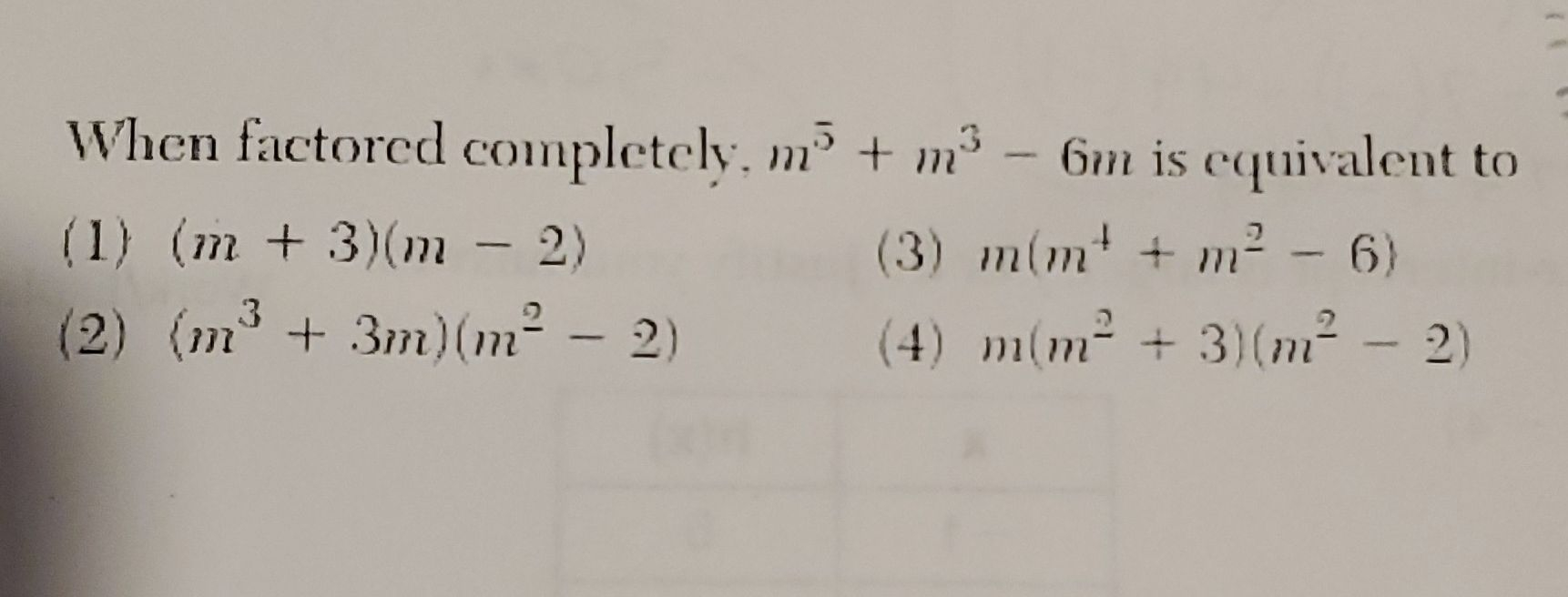Full solution
Q. When factored completely, is equivalent to() () () ()
- Identify Common Factor: We are given the expression , and we need to factor it completely. The first step is to look for a common factor in all terms.
- Factor Out 'm': We can see that each term has an 'm' in it, so we can factor out an 'm' from the entire expression.
- Factor Quadratic-like Expression: Now we need to factor the quadratic-like expression . This is similar to factoring a quadratic equation, except that is taking the place of a typical '' in a quadratic.
- Find Multiplying Numbers: We look for two numbers that multiply to and add to (the coefficient of ). These numbers are and .
- Factor Quadratic Expression: We can now factor the expression as .
- Final Factored Form: We have factored the expression completely, and the factored form is .

